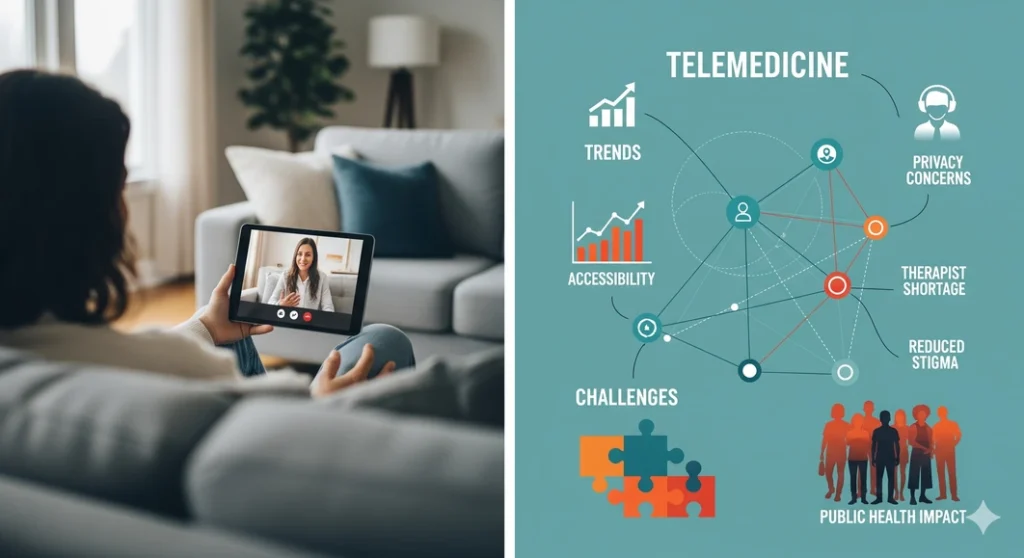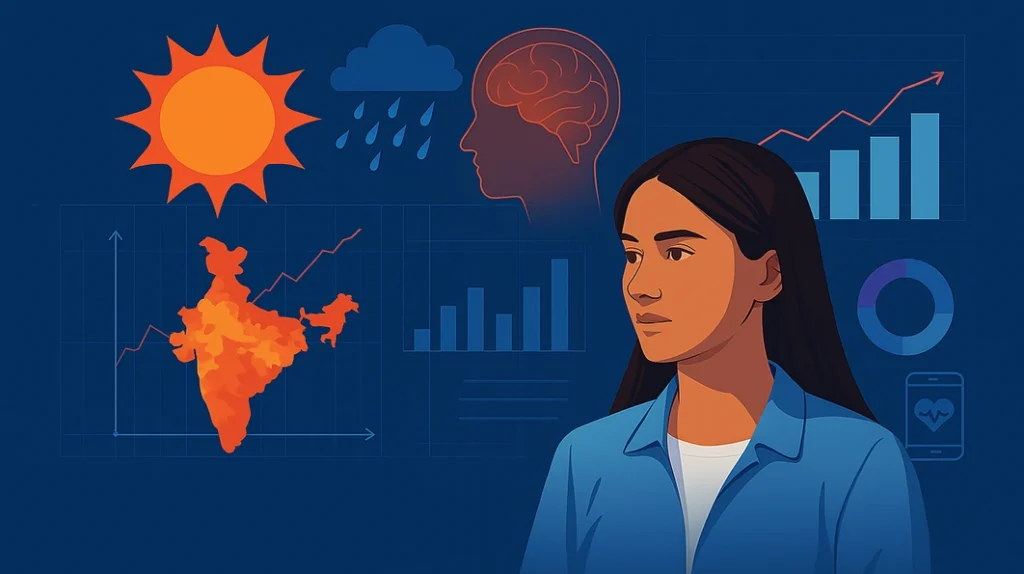New Delhi / Global – Telemedicine is reshaping mental health and public health delivery, with AI-powered tools, hybrid care models, and digital therapy now driving access, personalization, and equity in mental healthcare. As global demand for online mental health services continues to climb-reaching over 58 % in markets like Colorado-public health systems must balance innovation with robust regulation and ethical safeguards.

A Digital Revolution in Mental Health
Telemedicine, once a temporary solution during the COVID-19 crisis, is now at the forefront of medical care innovation. What started as simple video consultations evolved into a sophisticated network of virtual services that make up artificial intelligence, hybrid care models and digital therapy. According to recent reports, demand for online mental health services remains Colorado’s health visits, for example, rose from 47% by 2020 to 58% in 2023. This constant growth signs that telemedicine is no longer just a backup option, but a preferred care method for millions worldwide.
The Rise of Hybrid and Hybrid Mental Health Models
In 2025, digital psychiatry is defined by advanced technologies that make mental health support more accessible, personalized and efficient. Hybrid care models combine online therapy with selective personal visits, giving patients the flexibility they need. AI -powered tools now help psychiatrists diagnose mental health conditions, recommend personalized treatment plans, and automate follow -up care. The UK NHS has already adopted digital -supported cognitive therapy programs such as Sleepio and Ai Chatbots, such as Limbic, to extend mental health care to a wider audience. Similar innovations are arising globally from virtual anxiety treatments based on the AI -oriented language models that provide 24 -hour emotional support.
Bridging Gaps in Access to Public Health
Telemental health has immense potential to reduce health disparities, especially in rural and needy communities. In Telangana, India government-supported telemedicine services are reaching millions, proving that digital platforms can break barriers to care. However, access remains of Maryland’s irregular studies indicate that individuals in high-income areas are more likely to use mental health services than those in economically disadvantaged neighborhoods. This “digital division” highlights the need for public health initiatives that invest in accessible access to the internet, digital literacy and community dissemination to ensure that mental health telemedicine benefits everyone.
Regulation, Ethics, and The Future of Care
The rapid expansion of tele mental health also brought regulatory and ethical challenges. Some tele startups were criticized for prioritizing rapid growth on clinical quality, raising concerns about patient prescription and safety practices. AI -based mental health tools are under intense scrutiny; In August 2025, Illinois became the first US state to prohibit the way to provide therapy or make clinical decisions, citing safety risks. Globally, policy formulators are pressuring stronger regulations to protect patient privacy, ensure the ethical use of AI and ensure that licensed professionals remain central to the treatment of mental health.
The Public Health Imperative
For public health institutions, change to tele mental health is an opportunity and responsibility. By integrating technology into mental health care, we can improve access, reduce waiting times, and achieve historically excluded populations of traditional therapy. However, success depends on the balance of innovation with human supervision, safeguarding patient data and ensuring that digital health tools meet rigorous clinical patterns. With Medicare and other systems expanding coverage for tele mental health, the following way is clear: this is the future of mental health care and should be equitable, ethical and evidence -based.


